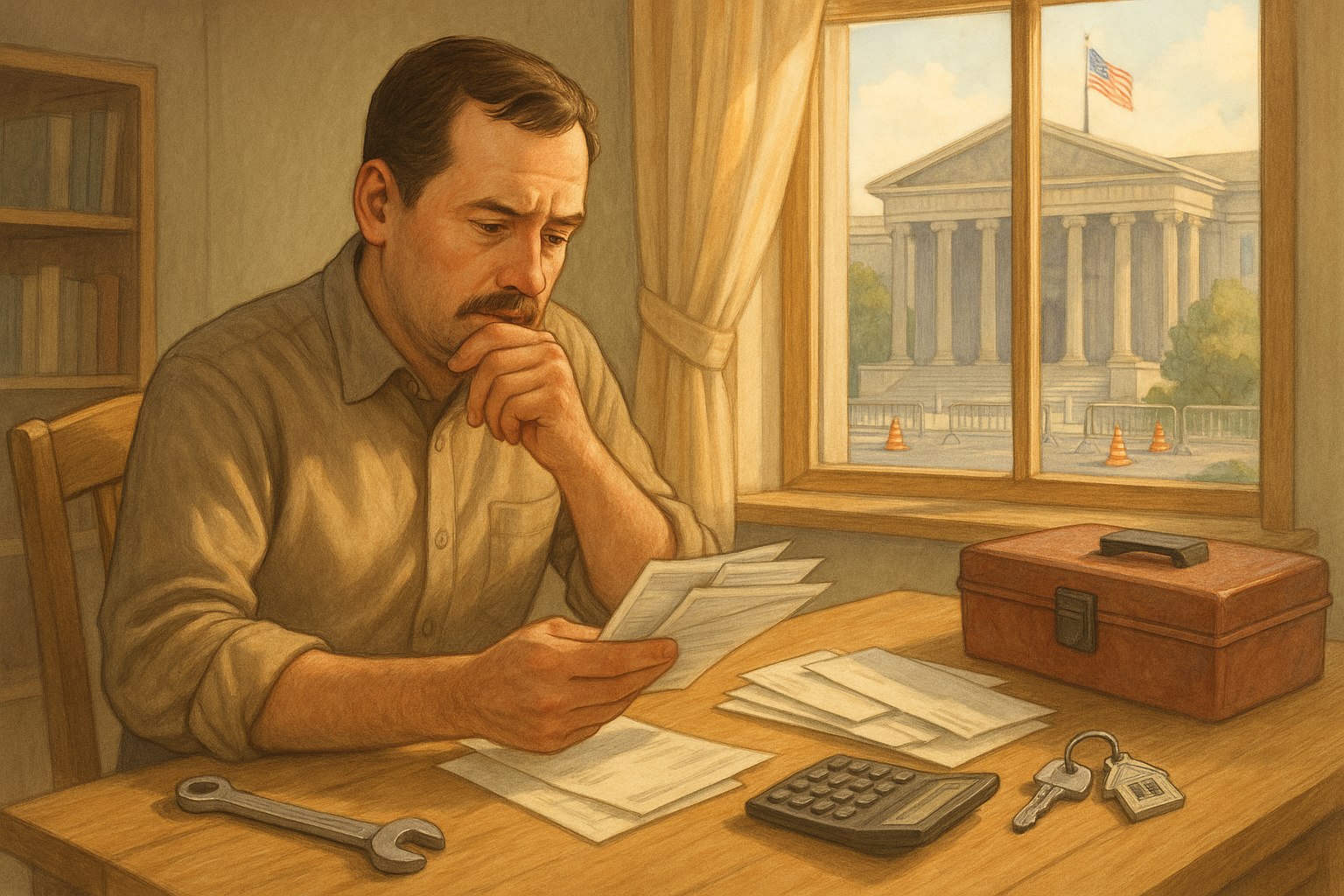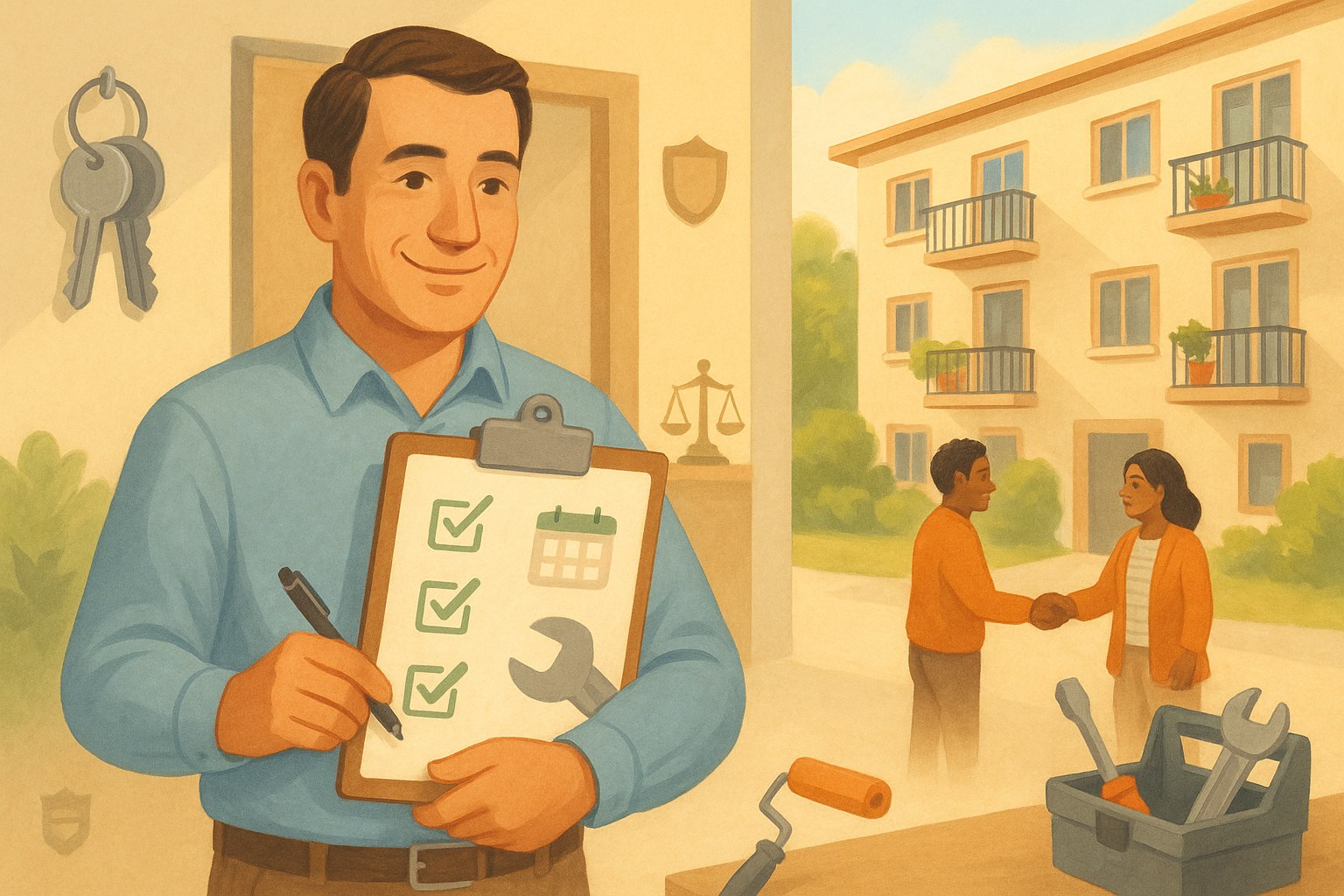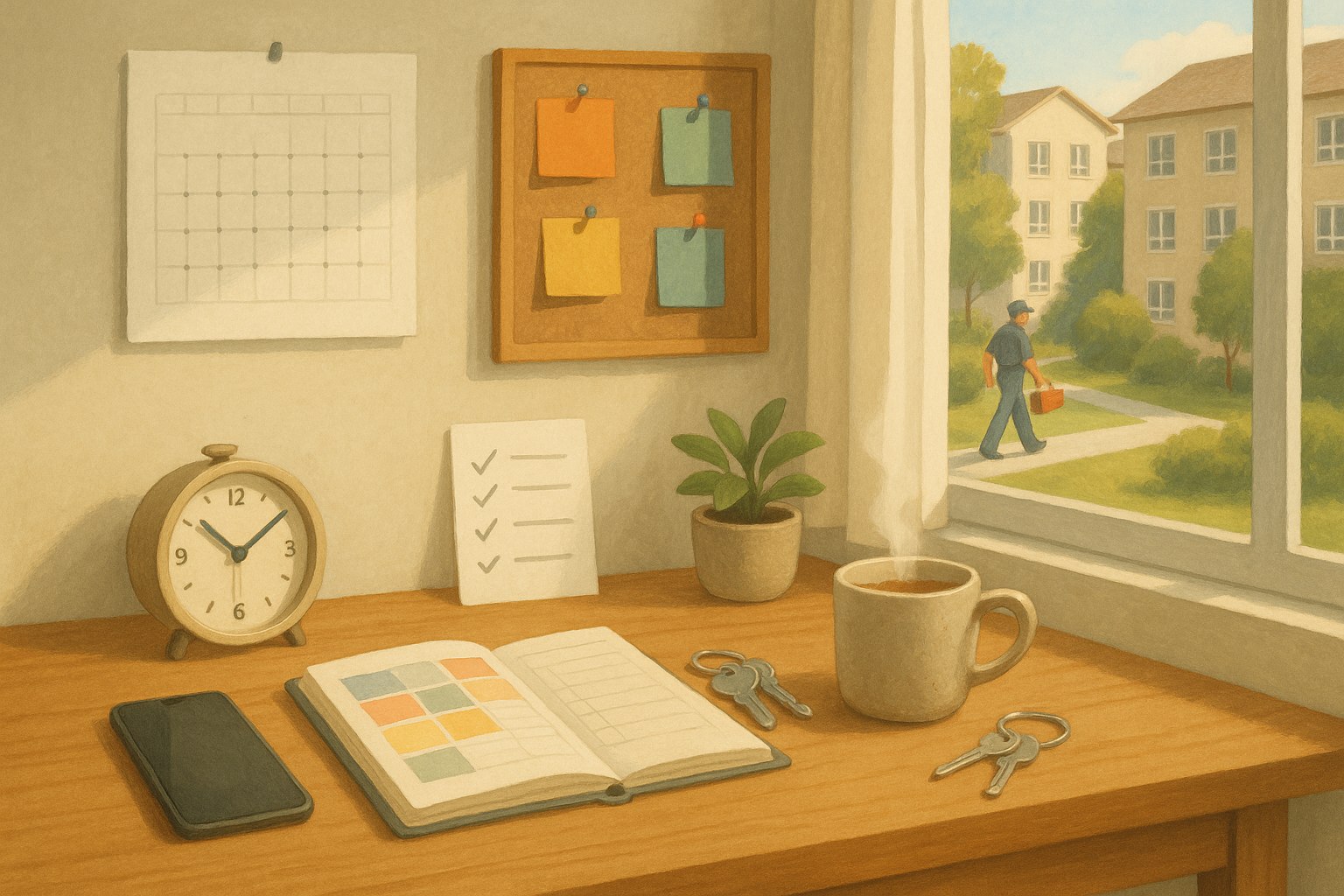Spring maintenance checklist for landlords

Spring maintenance items that affect habitability are most important, but it’s also the best time to address small defects that could turn into big ones, if they’re left unaddressed. Summer is coming, the best season to make repairs.
Warming temperatures create a good opportunity for landlords and property managers to inspect rental units and make a plan for spring maintenance. Tenants could handle some of the maintenance—especially in the yard or garden—but leaks, burst pipes, and other problems that affect habitability most likely need professional attention.
Related: 8 home repair tasks every landlord should learn how to do
Exterior inspection
Walk around the property to see the extent of winter damage. On this walk, try to do the following:
- Check the roof and siding for deterioration. You don’t have to get on a ladder to see roof damage. Missing or broken shingles are usually visible from the ground.
- Look for gutter leaks. Ice and snow are hard on gutters, and any leak you see should be repaired as soon as possible to prevent damage to the siding or erosion around the foundation.
- Test the outdoor faucets. If water froze in the pipes, they may leak.
- Inspect the walkways and driveway for cracks. This could happen from earth movements during freezing weather. These cracks need to be repaired or water will seep through them and cause further erosion.
- Note any rot. Look on wood siding, trim, fences, or decking. A small amount of rot isn’t an urgent problem, but if the rot is extensive, now is the time to deal with it.
- Pay attention to the condition of the lawn, garden, and surrounding foliage. Spring is the best time to prune back any branches that threaten to block windows or overhang the roof later in the summer.
Related: How to easily track maintenance requests and repairs
Interior inspection
If winter weather has caused any interior damage, tenants will probably know about it, but they might not let you know. It’s a good idea for a landlord or property manager to do a quick walkthrough to check a few things:
- Assess the damage caused by roof or siding leaks. This could range from soggy drywall and mold to warped flooring or compromised electrical fixtures.
- Note the condition of the floors and carpet. People tend to track salt-laden snow through the house on cold winter days.
- Turn on the air conditioners. You want to make sure they work. Now is a good time to replace the filters.
- Check for pests. Look for termites, cockroaches, and rodents. Critters tend to hunker down in the walls during winter, and they’ll still be there when spring comes.
Related: Ask Lucas 030: How do you perform an annual property inspection?
Handling spring maintenance
When it comes to repairs that affect habitability, such as major leaks and resultant water damage, it’s the landlord’s responsibility to do them or hire someone to do them.
The responsibility isn’t as clear-cut when it comes to defects that only affect the tenant’s enjoyment of the property. Peeling paint and displaced walkway pavers may be unsightly, for example, but they don’t stop life from going on. It may make sense to give tenants the option to make some of these repairs themselves. To avoid confusion over the issue of who’s going to pay, include a lease clause or amendment that covers it.
Lawn and garden maintenance is one area that the lease should cover. Many tenants like landscaping and may even consider a green light to do it themselves a perk of living on the property. But other tenants prefer this job be done for them. Landlords might consider charging more per month if they need to provide landscaping services.
General indoor cleaning is another lease topic for areas such as hardwood floors (that can suffer damage from salt and water), an unfinished basement, and the fireplace or wood stove. Whether it’s spring maintenance or year-round maintenance, it helps to clarify responsibilities in writing.
Related: Should a tenant be paid for doing yard work?
Get your game on
Once you’ve made your game plan, itemize the repairs you need to make with some urgency, and take care of those as soon as possible. Leave the others for later, but keep the list as a reminder. Priorities tend to change as the weather warms up and summer arrives, but winter will come again, and problems you don’t handle this year will be there next year. And they’ll be that much bigger.







